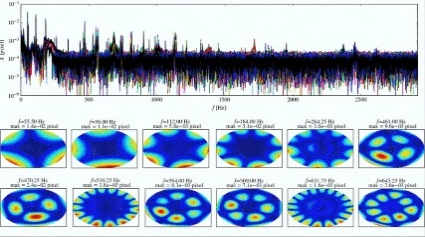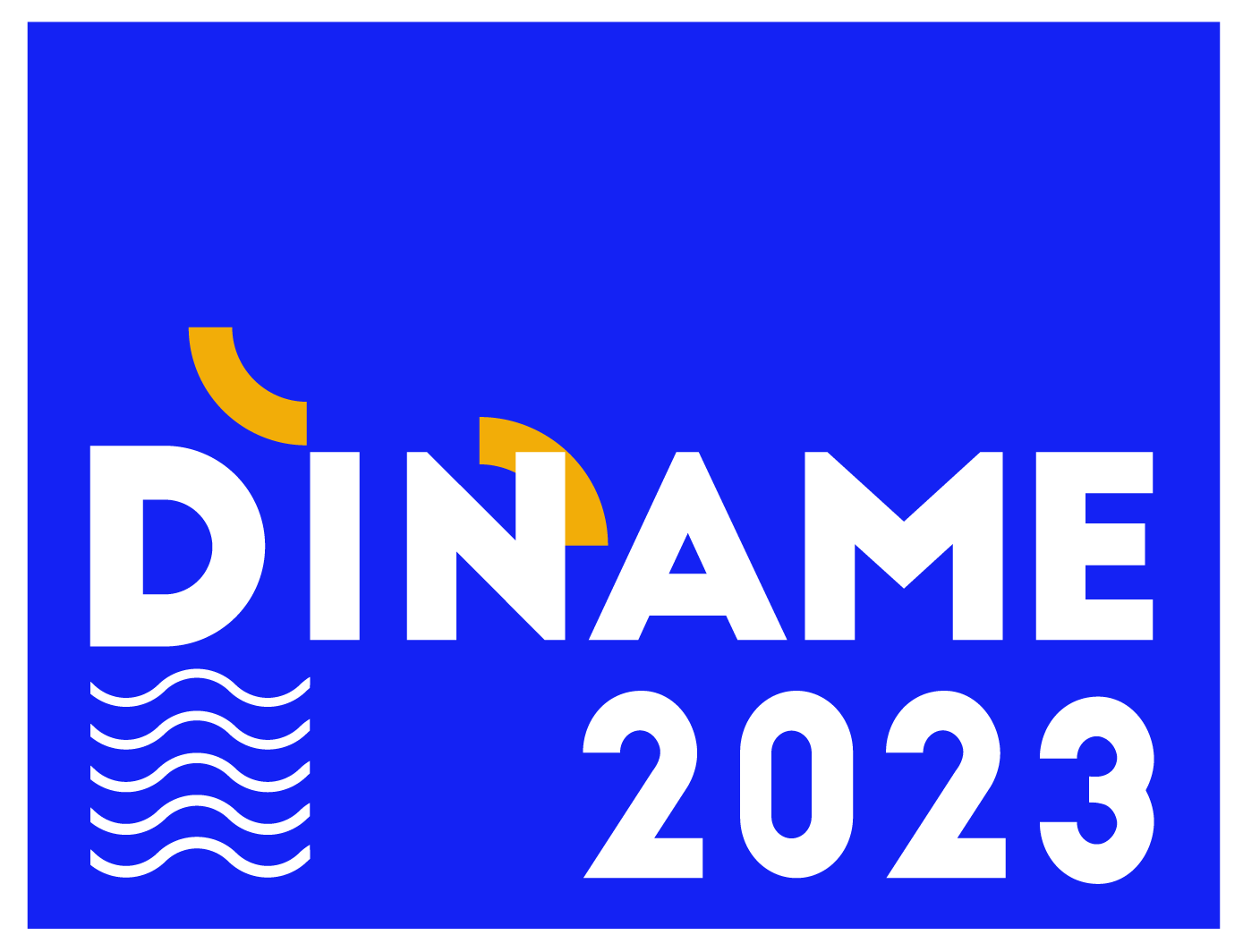-
 Leveraging vibration and wave phenomena in dynamical systems: from energy harvesting and bioinspired robotics to metamaterials and transcranial ultrasound
Leveraging vibration and wave phenomena in dynamical systems: from energy harvesting and bioinspired robotics to metamaterials and transcranial ultrasoundSpeaker: Professor Alper Erturk
Carl Ring Family Chair & Professor
Georgia Institute of Technology, EUA
George W. Woodruff School of Mechanical Engineering -
Abstract: This talk will review our recent efforts on exploiting vibration and elastic/acoustic wave phenomena in emerging fields and across disciplines for various applications. The first part will discuss examples from the domain of vibration energy harvesting for small electronic components by using piezoelectric transduction in conjunction with concepts from nonlinear dynamics and fluid-structure interaction. Multifunctional scenarios will also be presented, such as combining energy harvesting and bio-inspired actuation in the same robotic platform, as well as concurrent energy harvesting and metamaterial-based vibration attenuation. In the second part, the focus will first be placed on phononic crystal-based manipulation of 2D elastic and 3D acoustic wave propagation. Specifically, in-air sound wave focusing and underwater ultrasonic wave focusing using 3D-printed phononic crystals with tailored microstructure will be summarized for applications including wireless power transfer. Then, ultrasonic power/data transfer to wireless components in metallic enclosures will be addressed along with the use of phononic crystals for crosstalk minimization via bandgap formation between the piezoelectric channels. Examples will also be given on programmable piezoelectric metamaterials with synthetic impedance circuits. Finally, the leveraging of vibrations and guided waves in the human skull will be discussed briefly for purposes ranging from high-fidelity modeling and parameter identification via vibroacoustic experiments to investigating the role and potential use of guided waves in cranial/transcranial ultrasound.
Bio Prof. Alper Erturk is the Carl Ring Family Chair in the Woodruff School of Mechanical Engineering at Georgia Tech, where he leads the Smart Structures & Dynamical Systems Lab. His theoretical and experimental research interests are in dynamics, vibration, and acoustics of passive and active (smart) structures for various engineering problems. He has published 120 journal papers, 130 conference proceeding papers, 5 book chapters, and 2 books (total citations > 19,000 and h-index: 60). He is a recipient of various awards including an NSF CAREER Award in Dynamical Systems, ASME C.D. Mote Jr. Early Career Award for “research excellence in the field of vibration and acoustics”, ASME Gary Anderson Early Achievement Award for “notable contributions to the field of adaptive structures and material systems”, SEM James Dally Young Investigator Award for “research excellence in the field of experimental mechanics”, and numerous best paper awards including the Philip E. Doak Award of the Journal of Sound and Vibration, and two ASME Energy Harvesting Best Paper Awards, among others. He is an Associate Editor for various journals such as Smart Materials & Structures and ASME Journal of Vibration & Acoustics. He holds Invited/Adjunct Professor positions at Politecnico di Milano (POLIMI) and at Korea Advanced Institute of Science and Technology (KAIST). He is a Fellow of ASME and SPIE.
-
 Image-based Full-Field Identification in Structural Dynamics: Past, Present, and the Future
Image-based Full-Field Identification in Structural Dynamics: Past, Present, and the FutureSpeaker: Professor Janko Slavič
University of Ljubljana
Faculty of Mechanical Engineering -
Abstract: Image-based measurement techniques have steadily been gaining popularity, and have become a viable alternative to conventional methods in many applications. Image-based techniques provide a great spatial density of information and, due to the hardware progress, recently also a very high frequency of image acquisition (e.g. 20k frames per second at megapixel resolution).
This contribution will give a short introduction to the origins of the methods, starting from Lucas-Kanade’s research in the 1980s. After presenting the original ideas which resulted in the well-established classical method of digital image correlation (DIC), this contribution will focus on the methods developed in particular for the field of structural dynamics. Some of the topics discussed in detail are the optical-flow method, the noise in the image data, the overdetermination in image-date concerning modal identification, and the hybrid methods combining classical sensors and image data. If classical DIC methods have the (image-to-image) accuracy of approx. 1/100th of a pixel, it will be shown that in harmonic motion the identification of amplitude is successful up to approx. 1/100.000th of a pixel. The last part of this contribution will be devoted to selected methods that have a great potential for future research, e.g.: 3D dimensional vibration reconstruction based on the frequency-domain triangulation, spectral optical-flow imaging experimental technique, and the potential of thermoelectricity in structural identification.Bio: Prof. dr. Janko Slavič is a full professor at the University of Ljubljana, Faculty of Mechanical Engineering. He supervised 14 finished Ph.D. research projects and is currently supervising 7. His research focused are: image-based structural identification, vibration-fatigue by spectral methods, 3D printed dynamic sensors, and open-source based research in structural dynamics.



-
 Non-smooth dynamical systems and their engineering applications
Non-smooth dynamical systems and their engineering applicationsSpeaker: Professor Ekaterina Pavlovskaia
University of Aberdeen
School of Engineering -
Abstract: Nonlinear systems with discontinuities or non-smooth systems have complex dynamic behaviour and they are widely used to describe phenomena observed in science and engineering. These systems have been studied extensively over the last few decades and their potential to improve engineering design is started to be recognised. However, there is still a need to improve understanding of their behaviour and verify it experimentally. This keynote lecture will be focussed on the dynamics of non-smooth systems which are used to model some engineering applications.
Bio Professor Ekaterina graduated with first class degree with distinction in Mechanical Engineering from St.Petersburg State Polytechnical University in 1996, obtained a PhD in Applied Mathematics and Physics from the Russian Academy of Science in 1998, and then held an academic position at St Petersburg State University and had a short research spell at Ford Research Laboratory in the US, before joining the University of Aberdeen as a Research Fellow in 2000. Ekaterina is currently a Personal Chair in the School of Engineering and became the University’s first female Head of Engineering in 2021. Her expertise is in mathematical modelling and the applications she has been working on include novel resonance enhanced drilling technology, rotordynamics, and riser mechanics. Ekaterina is an author of more than 180 scientific publications including 70+ refereed journal papers and currently Subject Editor for Journal of Sound and Vibration.
-
 Multi-band gap metamaterials
Multi-band gap metamaterialsSpeaker: Professor Walter Lacarbonara
Sapienza University of Rome
Dipartimento di Ingegneria Strutturale e Geotecnica -
Abstract: The main focus of this talk is on 1D and 2D metamaterials featuring a periodic distribution of highly tun-able infinite-dimensional resonators. The embedded resonators are first treated as linear systems exhibiting eigenspectra which cause the appearance of single or multiple band gaps in the hosting metamaterials. The stop-bands sensitivity with respect to the design parameters is discussed. These resonators are then enriched
by nonlinearities. The nonlinear wavefrequencies and waveforms away from internal resonances obtained via a perturbation approach are shown to exhibit a high nonlinear tunability which is a key for advanced applications. Various 3D printed metamaterial samples are tested experimentally using 3D laser scanning vibrometry to show very interesting wave propagation properties.Bio: Walter Lacarbonara is a Professor of Nonlinear Dynamics at Sapienza University and Director of the Sapienza Center for Dynamics. During his graduate education he was awarded a MS in Structural Engineering (Sapienza University) and a MS in Engineering Mechanics (Virginia Tech, USA), and a PhD in Structural Engineering (Sapienza/Virginia Tech). His research interests cover nonlinear structural dynamics; dissipation in carbon nanotube/polymer nanocomposites; asymptotic techniques; nonlinear control of vibrations; experimental nonlinear dynamics; dynamic stability of structures. He is Editor in Chief of Nonlinear Dynamics, former Associate Editor for ASME Journal of Applied Mechanics, Journal of Vibration and Acoustics, Journal of Sound and Vibration. He served as Chair of the ASME Technical Committee on Multibody System and Nonlinear Dynamics, General co-Chair and technical program co-Chair of the ASME 2015 (Boston, USA) and 2013 (Portland, USA) IDETC Conferences. He has organized over 10 international symposia/conference sessions and, very recently, the First, Second, and Third International Nonlinear Dynamics Conferences (NODYCON, www.nodycon.org/2019), www.nodycon.org/2021), www.nodycon.org/2023)).
His research is supported by national and international sources (EOARD/AFOSR, NSF, European Commission, Italian Ministry of Science and Education). He has published over 250 papers and conference proceedings, 4 international patents (EU/USA/China), 24 book chapters, 6 co-edited Springer books and a single-authored book (Nonlinear Structural Mechanics, Springer, NY, https://link.springer.com/book/10.1007/978-1-4419-1276-3) for which he received the 2013 Texty Award nomination by Springer US.

